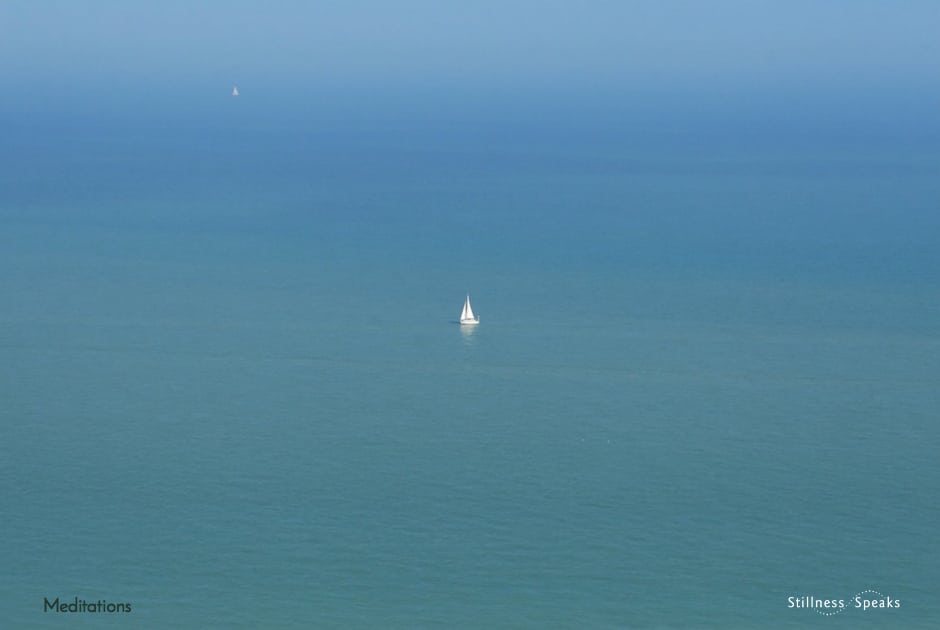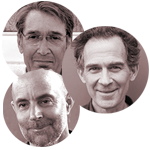Our future is, and always has been, something given by the whole universe. ~ Elias Amidon
Sufi teacher and writer Elias Amidon explores impermanence and presence within our notion of Sanctuary. These “two” qualities of our sanctuary — impermanence and presence — are not in actuality two. How this is, is a mystery. We are pleased to publish this recent article shared with us by Elias and originally published as Sanctuary on the website Open Path/Sufi Way. For more teachings from Elias, see his Stillness Speaks Teacher’s Page.
It’s not so easy being a human being. We learn early that this world hurts just as much as it comforts. The warm safety of our mother’s womb turns against us, squeezes, and sends us out into this too bright, clanging place. We find that sometimes we’re cuddled and sometimes we’re left alone to cry in a wet diaper. We learn to run happily on a sidewalk but then trip and skin our knees. Worse things happen as we grow taller, and we look for places to be safe, even if temporarily.
When I was a child and felt betrayed by the world — when I was scolded by my mother or had lost another fight with my big brother — I would climb to the top of a great beech tree in our backyard. It was my sanctuary. There was a place up there where the smooth branches made a good spot to sit and I could lean against the warm skin of the tree, my cheek against it, and watch the light play in the canopy of leaves around me. I was safe there. Nothing could hurt me.
My pillow was another place like that, when the lights were out and I could curl up under the covers and close my little eyes. That quiet, warm place was safe too, an inner sanctuary.
I suppose most of us had places like that as children, private places where we could hide for a while and feel our aloneness held in an undemanding embrace of safety. Of course, some of us had a relatively happy childhood, others not so much, but we all sought out our sanctuaries and found some degree of solace in them.
As we grew up, as we outgrew those first sanctuaries, we consciously or unconsciously looked for them in other places. Love relationships most often came next — the marvelous intimacy of another body next to ours, falling asleep together, especially when we were young or the love was new, made us dare think it would be that way forever, safe in the sanctuary of each other’s arms. But as we know, it didn’t last, and our once-safe relationships lost their safety.
So we looked again, and again. Sometimes a circle of friends helped, or a family, or children, but those havens proved demanding and stressful, and didn’t provide the comforting sanctuary we sought. Some of us turned to a religion or spiritual path and were comforted by the light coming through stained glass windows, the intoning of prayers, the wise words of the ancients, the promise of God’s arms, but — there’s always a “but” — even those consolations were fleeting and were more about a hoped-for safety than a present one.
Could it be that we’ve gotten this whole thing inside out? Could it be that our childhood hope for a sanctuary as a separate, safe place that’s able to shield us from suffering (and death) has actually kept us in the realm of suffering (and death)?
We are looking for safety, but what is it that we’re trying to protect? Our body? Our self? Our future? Our body is impermanent; we know that, just like everything in the universe is impermanent. Our self is a construct that vanishes when we try to find it, so what’s the point of trying to protect something we can’t even find? Our future? Is that even remotely up to us? Our future is, and always has been, something given by the whole universe.
What if we were to see that the universe itself is our sanctuary? That we’re safe here because we don’t need to hide from anything? If this is true, then we can relax. The universe sustains and supports our life and our death. Our life and our death are not actually opposites, they are united in each moment that arrives and passes. Our nature, and the nature of the universe, is the same: impermanence, change, arriving and passing, continual movement. When we understand this and don’t try to resist it, we realize we are safe, as safe as the whole universe is safe.
You might think that “the universe is our sanctuary” is a nice idea, but that it’s too abstract and cold to offer much comfort. But the universe and its wonder are not an idea. The universe is pure light and our lives are expressions of that light, each moment we live and each moment we die. We are its flaring forth, its blossoming.
When we see this and surrender to this, an even deeper mystery is revealed. The nature of this enormous sanctuary is impermanence, yes, continual change and becoming, and that is our nature too, but at the same time, we come to see that the nature of the universe, the totality, is pure presence, not subject to change, perfectly clear. That is our nature as well.
These “two” qualities of our sanctuary — impermanence and presence — are not in actuality two. How this is, is a mystery. Yet it’s a mystery that is apparent right now, for each of us, in this living moment: The simple clarity of our awareness is pure, unmoving presence, yet it reveals all movement.
Once we glimpse this mystery in our own being, we begin to see it everywhere. Everything changes, while this clear presence doesn’t. That impossible miracle is what blossoms with infinite generosity our radiant universe, our sanctuary. We see then that this generosity is what we call love, love beyond any conception we might have of that word. In that infinite love we are safe and always have been and always will be.
Written by Elias Amidon and originally published on the website Open Path/Sufi Way. For more teachings from and information about Elias Amidon, see his Stillness Speaks Teacher’s Page.










